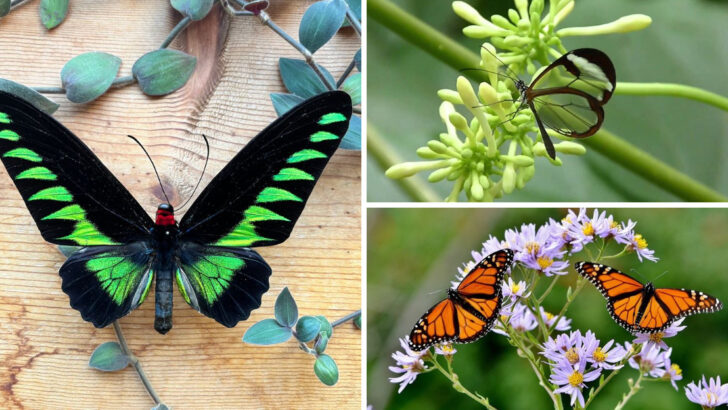Butterflies are nature’s masterpieces, but some take it to another level.
Imagine creatures that seem too beautiful to be real, their wings painted with colors and patterns that could easily belong in a gallery.
These 23 butterflies are living works of art, each one a stunning testament to the magic of nature’s brushstrokes.
From vibrant blues to intricate patterns, these butterflies are not just insects—they are flying pieces of pure artistry, waiting to be admired. Get ready to be amazed by the stunning designs that make these butterflies the true showstoppers of the insect world!
Blue Morpho
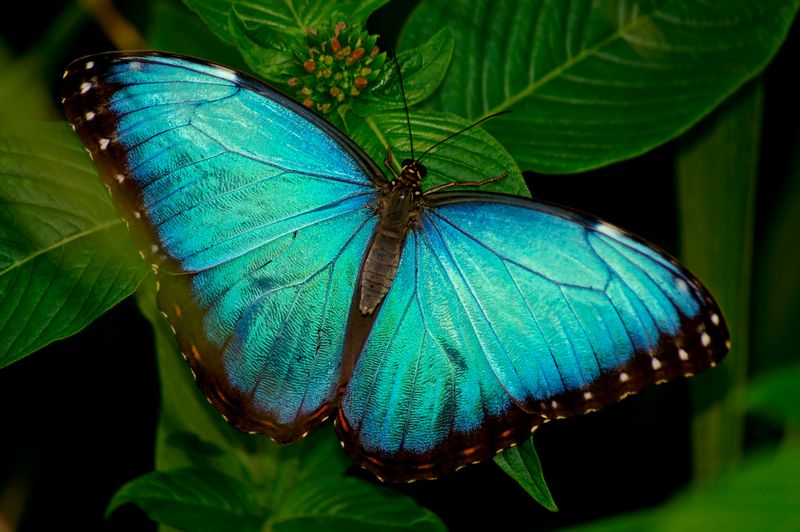
The Blue Morpho is a dazzling butterfly native to the tropical rainforests of Latin America. Its wings are a brilliant shade of blue, shimmering like polished jewels in the sunlight. This butterfly’s vibrant color is due to microscopic scales on its wings that reflect light. When perched, its wings appear brown with eye spots, providing camouflage against predators.
Blue Morphos are often seen flitting gracefully through the forest canopy, feeding on fermenting fruits. Their beauty is not only admired by nature lovers but also plays a crucial role in attracting mates, making them a true spectacle of nature.
Monarch
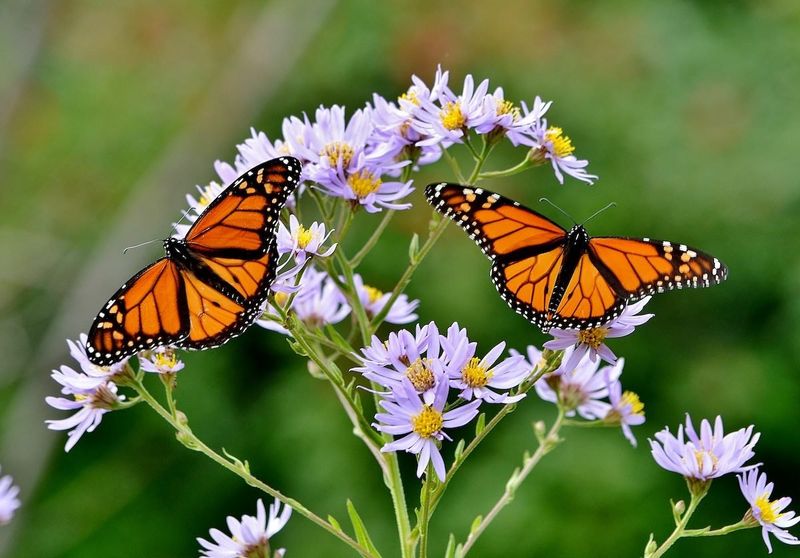
The Monarch butterfly is famous for its epic migration across North America, traveling thousands of miles to reach its wintering grounds in Mexico. Its striking orange and black wings are easily recognizable and serve as a warning to predators about its toxicity, derived from the milkweed plants it consumes.
Each year, millions of Monarchs embark on this incredible journey, guided by instincts and environmental cues. This migration is one of nature’s most fascinating phenomena. Monarchs are not only admired for their endurance but also for their role in pollination and their symbolic representation of change and endurance.
Peacock Butterfly
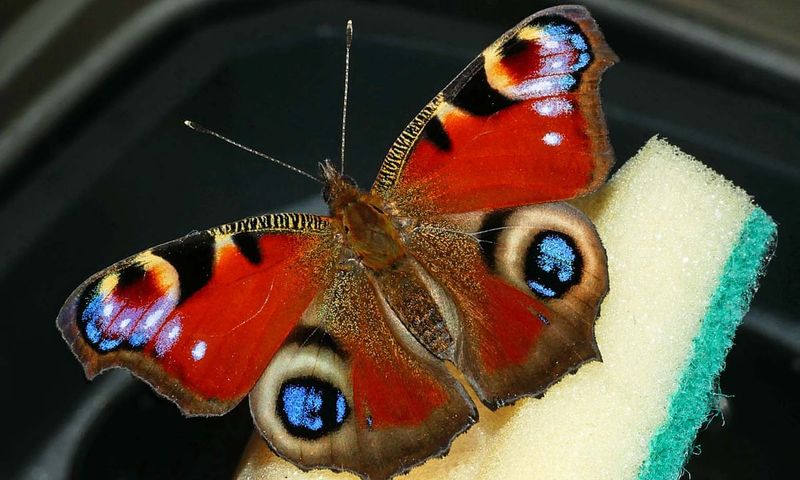
The Peacock butterfly, native to Europe and Asia, is celebrated for its spectacular eye spots that adorn its wings. These bright and colorful markings serve as a defense mechanism, startling predators and giving the butterfly a chance to escape.
Peacocks are commonly seen in gardens and woodlands, basking in the sunlight or feeding on nectar-rich flowers. Their bold and beautiful appearance makes them a favorite among butterfly enthusiasts. Not only are they captivating to watch, but they also play an essential role in pollination, helping to sustain the ecosystems they inhabit.
Zebra Longwing
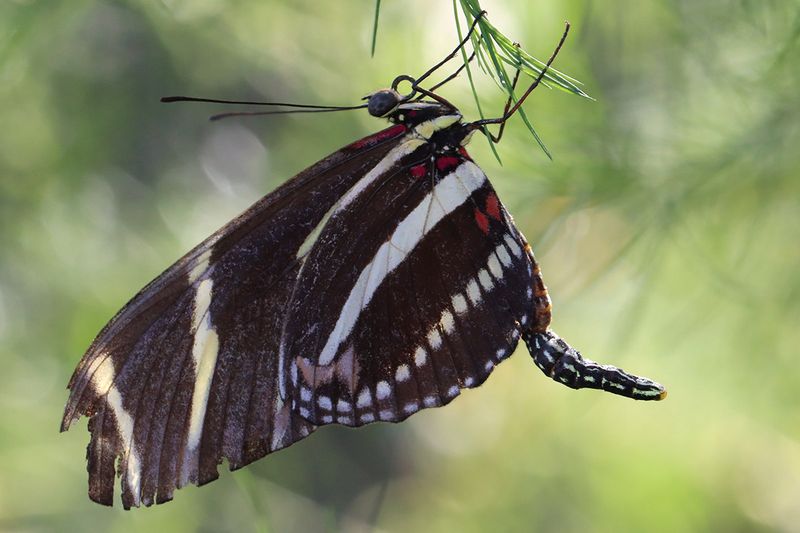
The Zebra Longwing is easily recognized by its distinct black and yellow striped wings, resembling the pattern of a zebra. Found primarily in Central and South America, this butterfly is known for its graceful flight and long lifespan.
Its diet includes pollen, a unique trait that gives it an extended life compared to other butterflies. The Zebra Longwing’s striking appearance and gentle nature make it a beloved visitor to gardens. As it flutters from flower to flower, it contributes to pollination, highlighting the interconnectedness of life and the beauty of diversity in nature.
Swallowtail
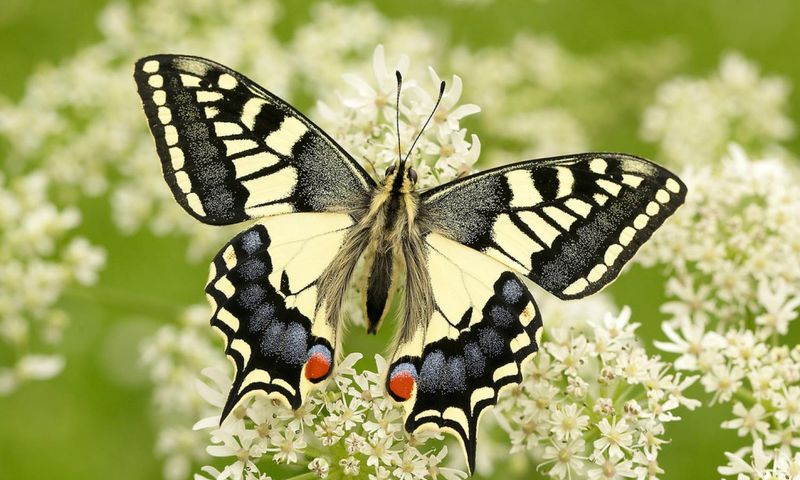
Swallowtail butterflies are known for their graceful tails, which resemble those of swallows. These stunning insects are found worldwide, with species exhibiting a wide range of colors and sizes. The tails on their hindwings often help in distracting predators, giving them a chance to escape.
Swallowtails are often seen fluttering in meadows and gardens, sipping nectar from a variety of flowers. Their presence adds vibrancy to any landscape, and their beauty is matched by their ecological importance as pollinators. Observing these butterflies can be a delightful experience, offering a glimpse into the wonders of nature.
Painted Lady
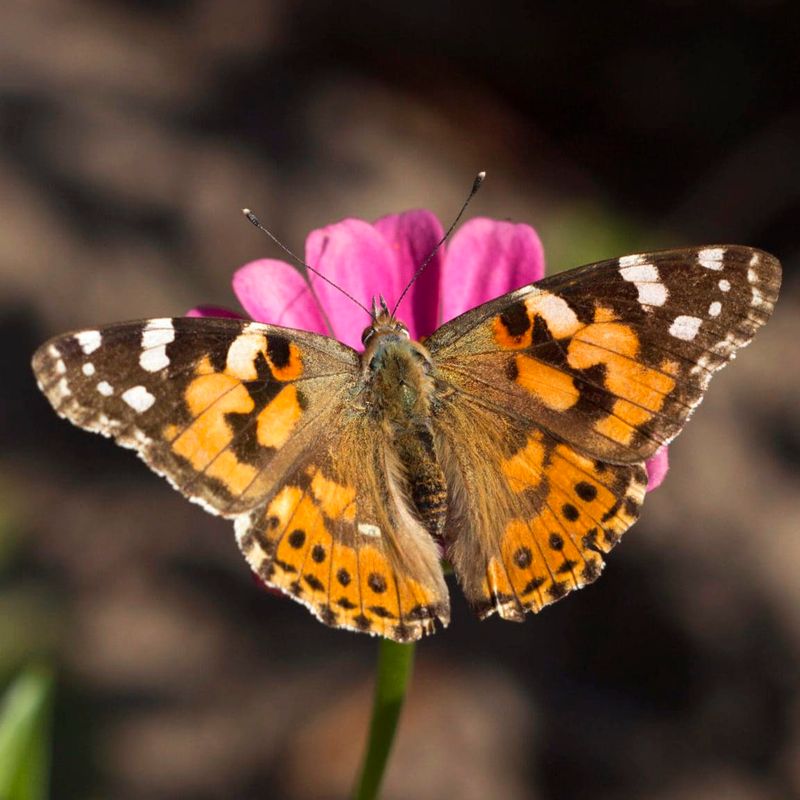
The Painted Lady is a widely distributed butterfly, known for its striking orange and black patterned wings. Unlike many butterflies, it can adapt to diverse habitats, ranging from deserts to gardens. Its wide distribution is matched by its remarkable migration patterns, often traveling great distances.
These butterflies are frequent visitors to gardens, where they feed on nectar from various flowers. The Painted Lady’s adaptability and resilience make it a symbol of nature’s ingenuity. Watching these butterflies flutter gracefully offers a moment of joy and a reminder of the beauty that surrounds us.
Purple Emperor
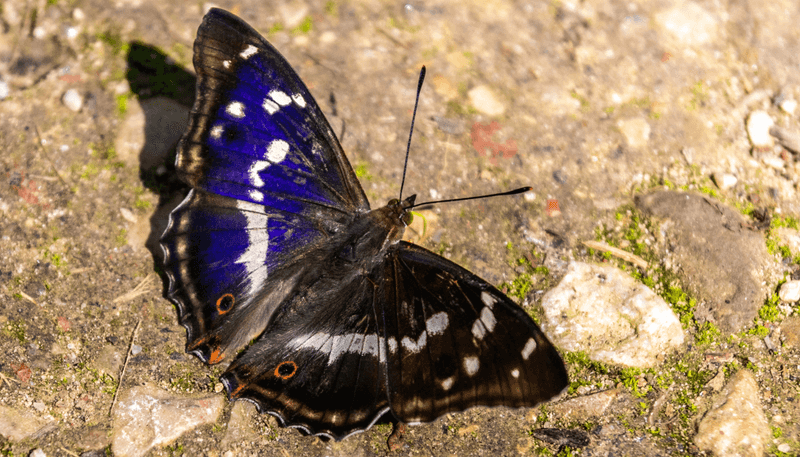
The Purple Emperor is a magnificent butterfly found primarily in European woodlands. Its wings exhibit a stunning iridescent purple sheen, which can appear blue or even black depending on the angle of light. This regal butterfly prefers the canopy, making sightings a special occasion for enthusiasts.
Males are particularly territorial and are known to engage in aerial battles. The Purple Emperor’s elusive nature and striking appearance have made it a subject of fascination and admiration. Its presence in the wild is a testament to the richness of biodiversity and the allure of the natural world.
Ulysses Butterfly
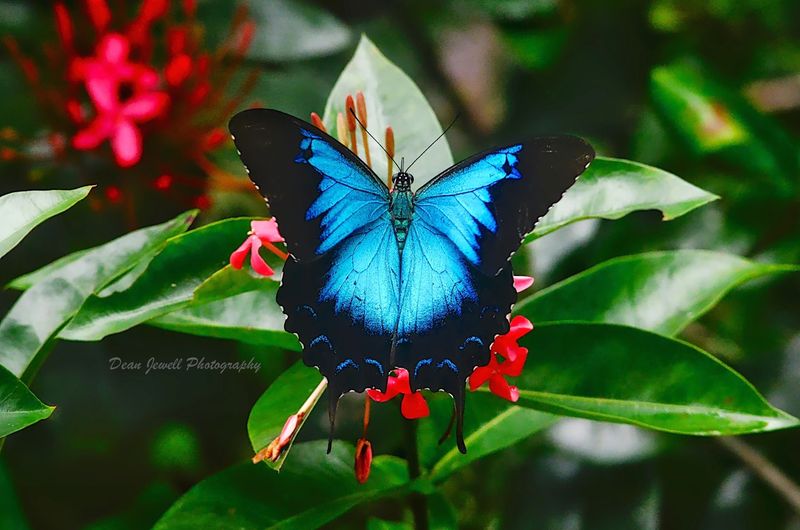
The Ulysses butterfly, or Blue Mountain Swallowtail, is an iconic species from Australia. Its vivid blue wings with black edges are a sight to behold, capturing the essence of tropical beauty. Often found in the rainforests of Queensland, this butterfly is a symbol of the region’s natural heritage.
The Ulysses is a fast flyer, darting through the forest with agility. Its striking color and rapid movements make it a favorite among photographers and nature lovers. Observing a Ulysses butterfly in its natural habitat is a reminder of the magnificence and diversity of life on Earth.
Greta Oto
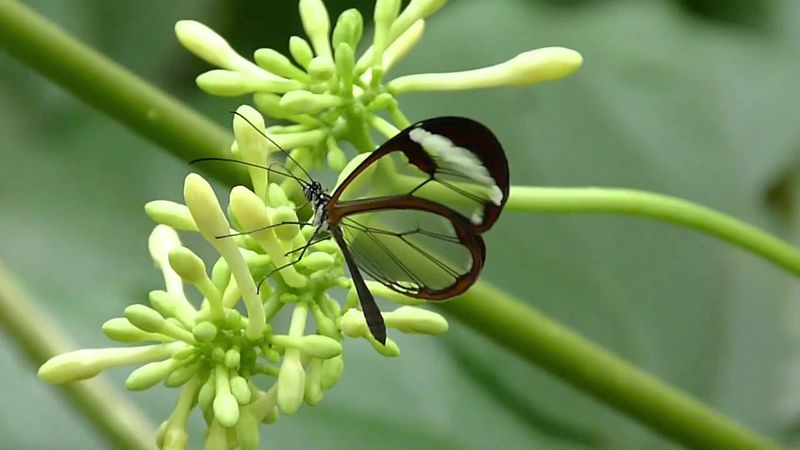
Greta Oto, commonly known as the Glasswing butterfly, is celebrated for its transparent wings, which allow it to blend effortlessly with its surroundings. Native to Central America, its wings are devoid of scales, giving them a glass-like appearance.
This feature makes it a master of camouflage, evading predators with ease. Greta Oto can often be found in forested areas, feeding on the nectar of tropical flowers. Its ethereal beauty and delicate nature captivate all who encounter it. The Glasswing butterfly is a living testament to the artistry of nature and the wonders that lie within.
Rajah Brooke’s Birdwing
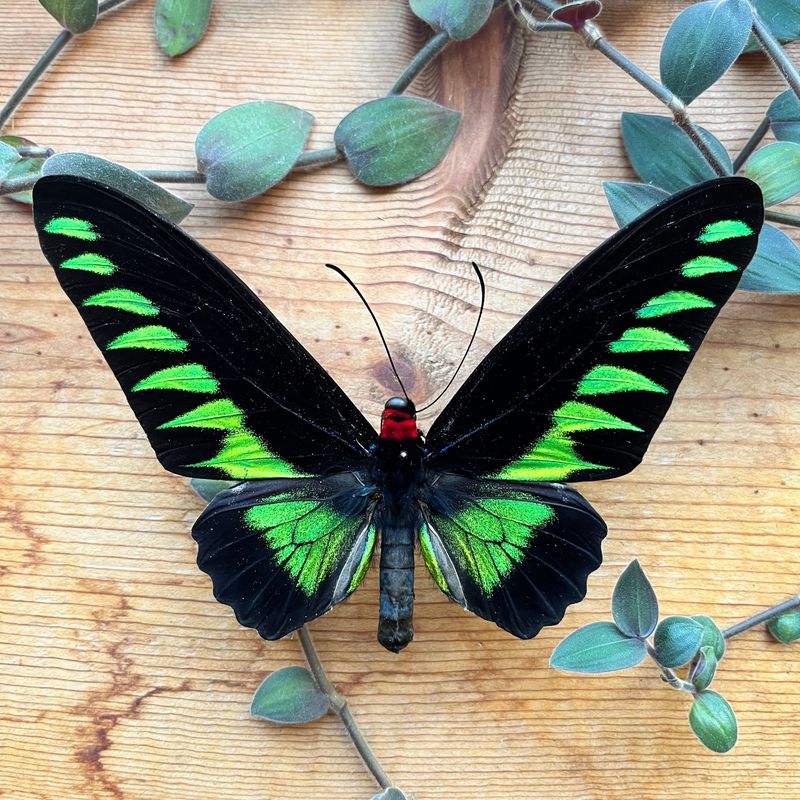
Rajah Brooke’s Birdwing is a majestic butterfly native to the rainforests of Borneo and Malaysia. Its large wings are adorned with striking green and black patterns, making it one of the most beautiful birdwings in the world. This butterfly is named in honor of Sir James Brooke, the first White Rajah of Sarawak.
It is often seen gliding gracefully through the forest, contributing to the enchanting ambiance of its habitat. Rajah Brooke’s Birdwing is a symbol of the rich biodiversity found in tropical rainforests and the intricate connections that sustain these ecosystems.
Great Eggfly
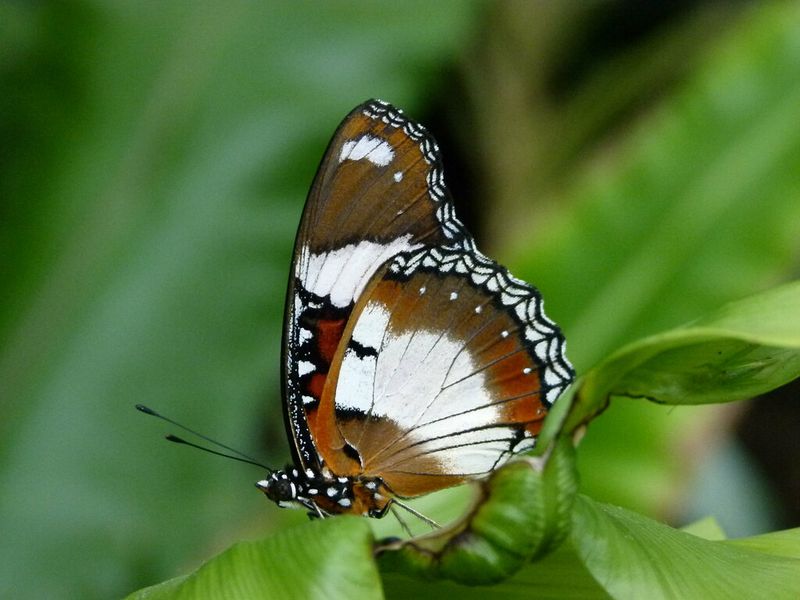
The Great Eggfly is a butterfly of stunning contrasts, with deep black wings adorned with iridescent blue or purple spots. Found in Southeast Asia and Australia, this butterfly’s dramatic appearance is matched by its fascinating behavior. Males are particularly territorial, often seen defending their space from intruders.
The Great Eggfly frequents gardens and open areas, feeding on a variety of nectar-rich flowers. Its presence adds a vibrant splash of color to any setting. This butterfly exemplifies the diversity and beauty of the Lepidoptera family, enchanting observers with its bold and beautiful display.
Adonis Blue
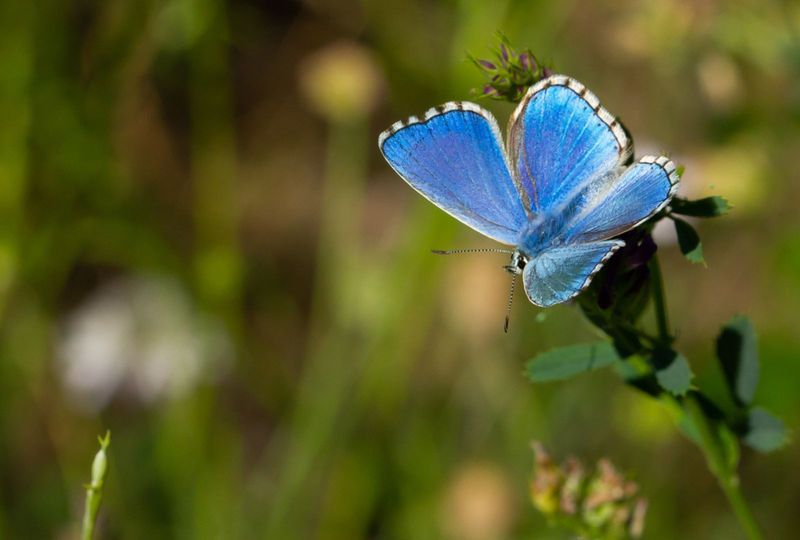
The Adonis Blue is a striking butterfly found primarily in Europe, known for its vibrant blue wings that shine brilliantly in the sunlight. Males are particularly vivid, while females tend to have more subdued brown tones. This butterfly thrives in chalk grasslands, where it feeds on wildflowers.
Adonis Blues are often seen basking in the sun, their wings open to display their full splendor. The presence of these butterflies is a sign of a healthy ecosystem, as they require specific conditions to flourish. Their beauty and ecological significance make them a cherished sight for nature lovers.
Postman Butterfly
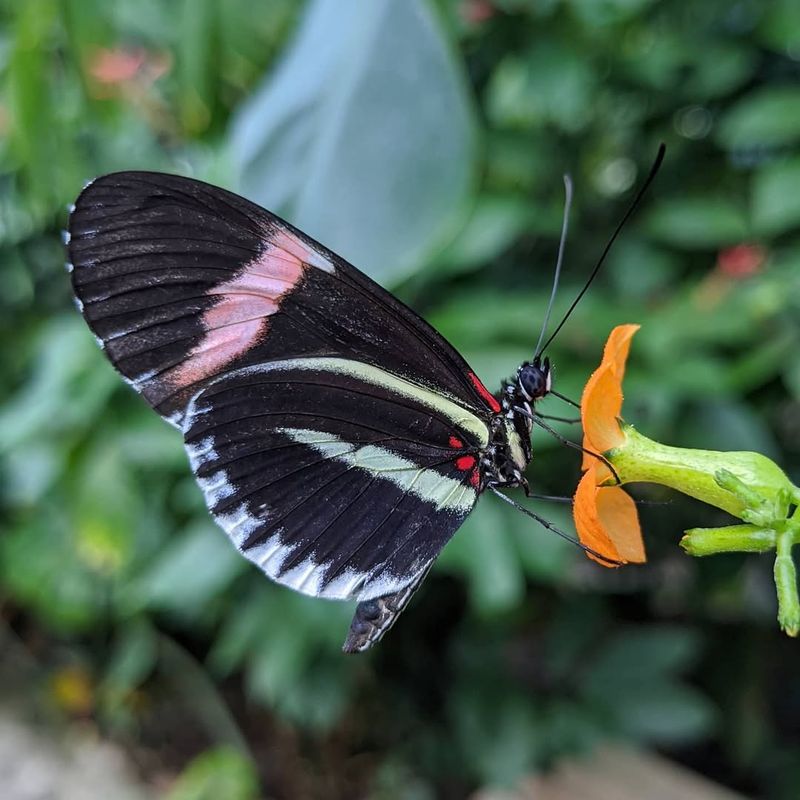
The Postman butterfly is easily recognized by its vivid red and black wings, adorned with unique patterns that vary between individuals. Native to Central and South America, it is a common sight in gardens and rainforests, where it feeds on the nectar of tropical flowers.
These butterflies are known for their territorial nature and are often seen patrolling their chosen area. The Postman’s striking appearance and dynamic behavior make it a favorite among butterfly enthusiasts. Its presence in the wild highlights the richness of tropical ecosystems and the fascinating diversity of butterfly species.
Comma Butterfly
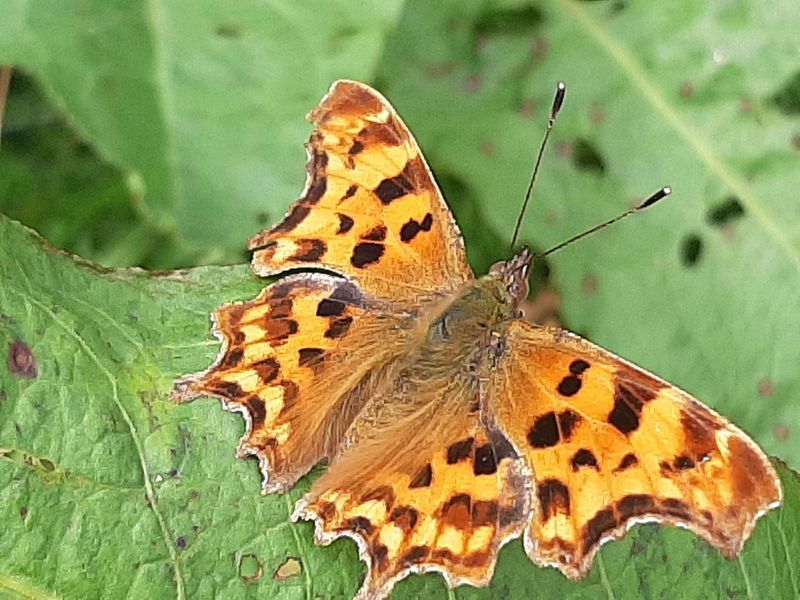
The Comma butterfly is named for the distinctive comma-shaped mark on the underside of its wings. Found primarily in Europe and Asia, this butterfly’s wings are a beautiful orange-brown, with a ragged appearance that resembles dead leaves. This camouflage helps it evade predators during its inactive phases.
Comma butterflies are often seen in woodlands and gardens, feeding on nectar and basking in the sun. Their unique appearance and adaptive strategies make them a fascinating subject for observation. These butterflies exemplify nature’s ingenuity in survival and adaptation.
Julia Butterfly
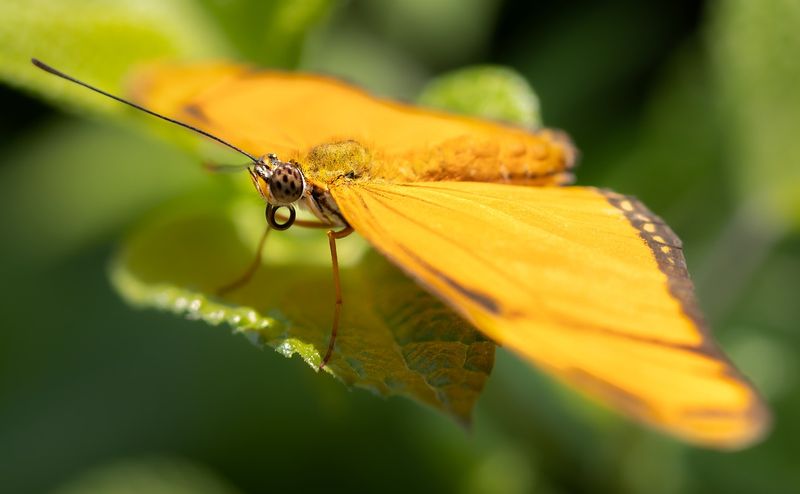
The Julia butterfly is a vibrant species found in the southern United States, Central, and South America. Its elongated orange wings are a striking sight, often seen fluttering energetically in gardens and meadows. Known for its rapid flight, the Julia is a frequent visitor to flowers, feasting on nectar.
Its bright color serves as a warning to predators, indicating its unpalatable taste. The Julia’s lively presence and bold appearance make it a captivating addition to any landscape. Observing this butterfly in its natural habitat offers a glimpse into the dynamic world of insects and their roles in ecosystems.
Green Hairstreak
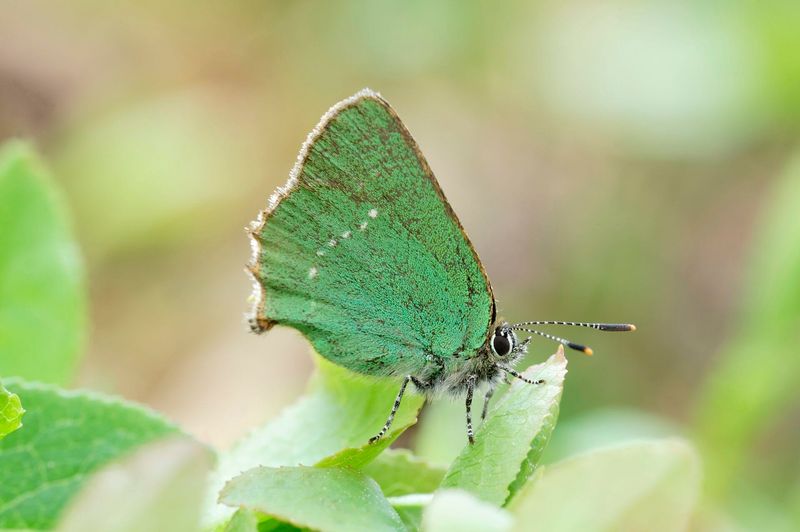
The Green Hairstreak is a small but striking butterfly, easily identified by its vibrant green wings. Found across Europe and Asia, this butterfly is a master of camouflage, blending seamlessly with foliage. Its wings are adorned with delicate white streaks, adding to its charm.
Green Hairstreaks are often seen flitting around bushes and shrubs, where they feed on nectar. Their presence is a sign of spring, as they emerge with the blooming of flowers. This butterfly’s subtle beauty and ecological importance make it a cherished part of the natural landscape, offering joy to those who encounter it.
Queen Alexandra’s Birdwing
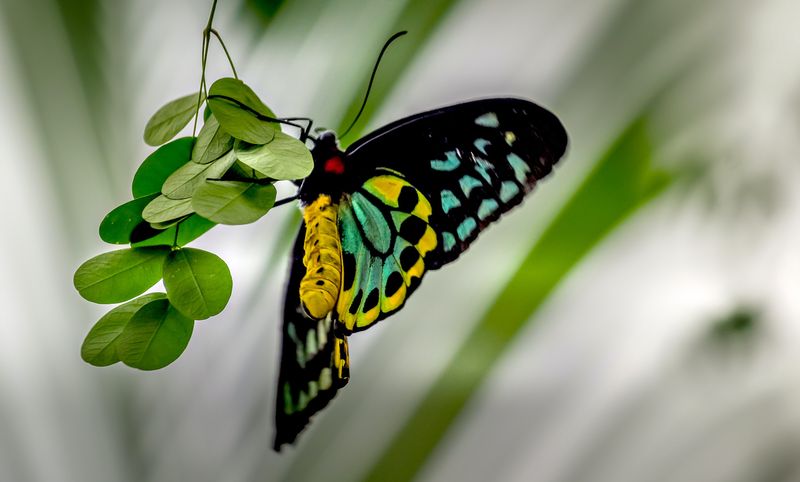
Queen Alexandra’s Birdwing is the largest butterfly in the world, found in the rainforests of Papua New Guinea. Its wingspan can reach up to 30 centimeters, showcasing a stunning array of colors from green to black. This butterfly is named in honor of Queen Alexandra of Denmark.
Its size and beauty make it a sought-after sight for nature enthusiasts. Despite its grandeur, this butterfly faces threats from habitat loss. Conservation efforts are crucial to preserving its habitat and ensuring its survival. Queen Alexandra’s Birdwing is a symbol of the exotic and the fragility of our planet’s ecosystems.
Small Tortoiseshell
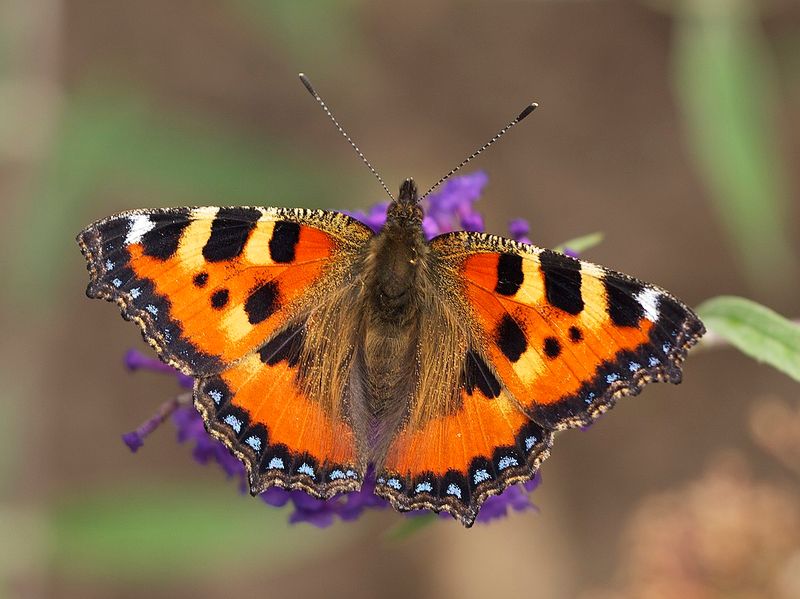
The Small Tortoiseshell is a charming butterfly found across Europe and Asia. Its wings are a striking combination of orange, black, and yellow, with distinctive blue spots along the edges. This butterfly is often seen in gardens, fields, and hedgerows, where it feeds on nectar from various flowers.
During the colder months, Small Tortoiseshells hibernate, emerging in spring to bring color and life to the landscape. Their adaptability and widespread presence make them a beloved sight for nature lovers. These butterflies remind us of the resilience and beauty of the natural world.
Red Admiral
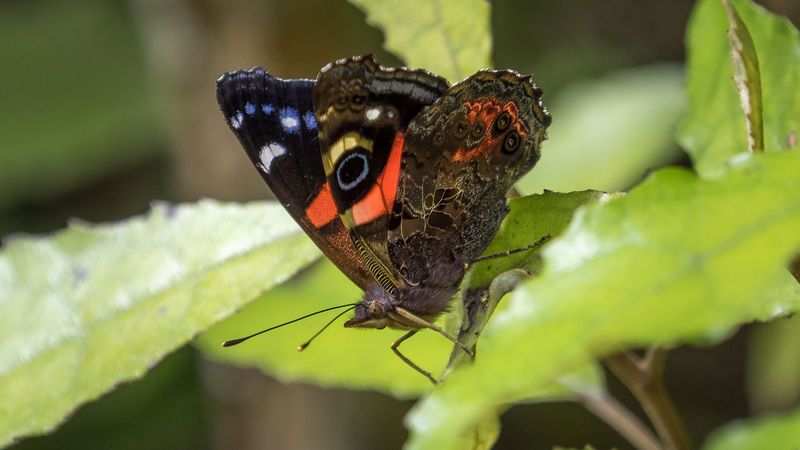
The Red Admiral is a striking butterfly known for its bold black and red wings, accented with white spots. Found throughout Europe and North America, this butterfly often visits gardens in search of nectar. Its distinctive pattern makes it easily recognizable and a favorite among butterfly watchers.
Red Admirals are known for their strong flight and migratory behavior, traveling between breeding and feeding grounds. Their presence in a garden is a sign of a healthy ecosystem. These butterflies are a testament to the adaptability and beauty of the species, bringing joy to all who observe them.
Clouded Yellow
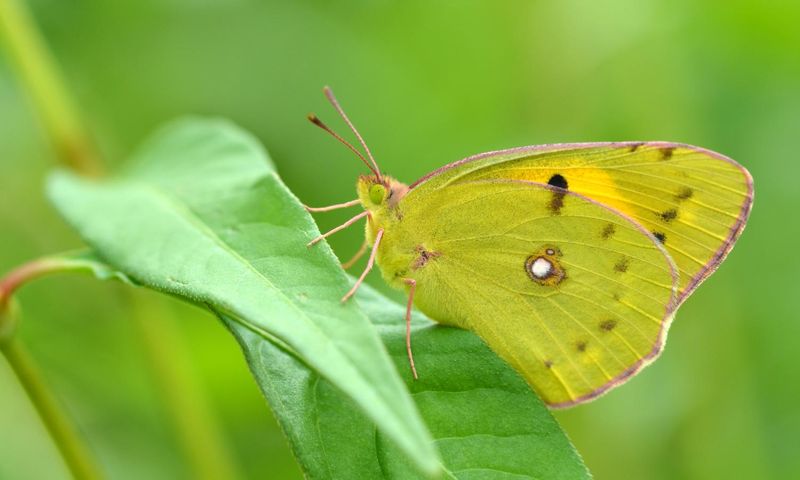
The Clouded Yellow is a vibrant butterfly found across Europe, Africa, and Asia. Its wings are a brilliant shade of yellow, often seen fluttering energetically in open fields and meadows. This butterfly is known for its strong and purposeful flight, making it a challenging subject to photograph.
Clouded Yellows are migratory, often traveling long distances to find suitable habitats. Their presence in a landscape adds a splash of color and a sense of dynamism. These butterflies exemplify the vitality and beauty of nature, enchanting those who catch a glimpse of their sunny wings.
Long-tailed Skipper
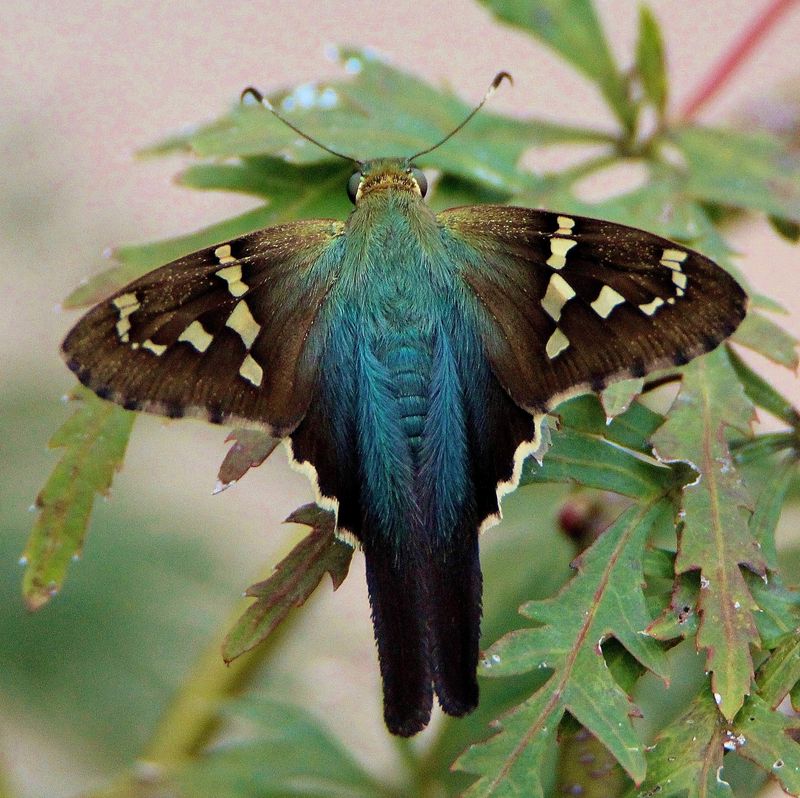
The Long-tailed Skipper is easily recognized by the elongated tails on its hindwings, a feature that sets it apart from other butterflies. Found throughout the Americas, this butterfly is known for its rapid and erratic flight. Its wings are a lovely shade of blue-green, providing a striking contrast against the flowers it frequents.
These skippers are often seen darting through gardens and meadows, feeding on nectar. Their unique appearance and lively demeanor make them a delightful sight for observers. Long-tailed Skippers remind us of the diversity and wonderment found in the world of butterflies.
Cabbage White
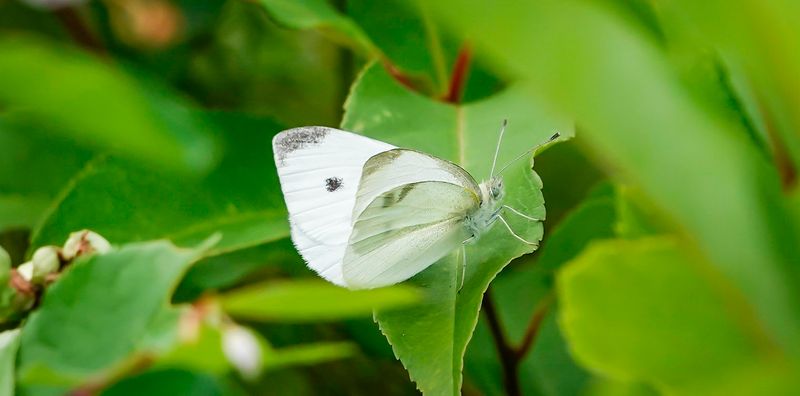
The Cabbage White is one of the most common and widely recognized butterflies, known for its simple yet elegant white wings. Found across Europe, Asia, and North America, this butterfly is often seen fluttering around gardens and fields. Its caterpillars are considered pests by gardeners, feeding on cabbage and other brassicas.
Despite this, the Cabbage White plays a role in the ecosystem, serving as a pollinator for various plants. Its ubiquitous presence and gentle beauty make it a familiar and cherished sight. Observing a Cabbage White can evoke a sense of nostalgia and appreciation for the everyday wonders of nature.
Orange Tip
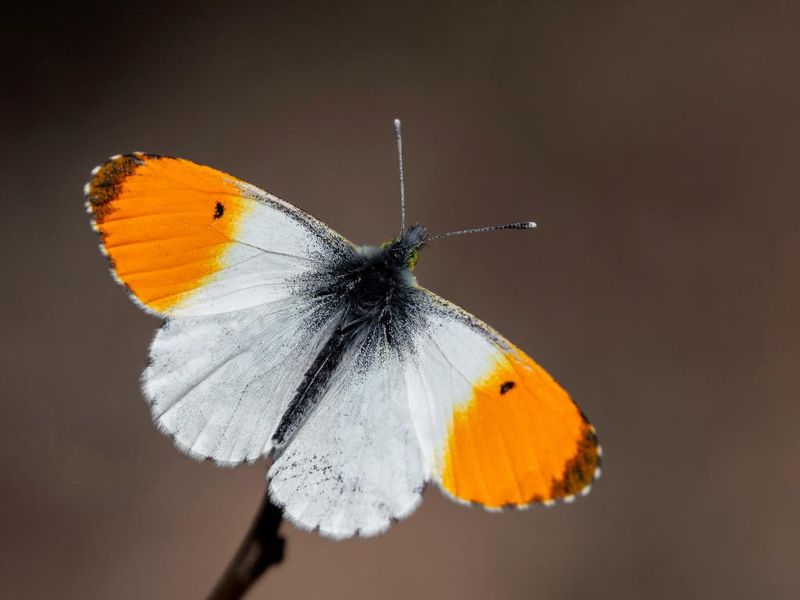
The Orange Tip is a delightful butterfly found in Europe and Asia, easily recognized by the bright orange tips on its otherwise white wings. Males are particularly vibrant, while females are more subdued. This butterfly is a herald of spring, often seen flitting among wildflowers.
Orange Tips are associated with purity and new beginnings, symbolizing the renewal of nature. They are frequent visitors to meadows and gardens, feeding on the nectar of early-blooming plants. The Orange Tip’s charming appearance and seasonal significance make it a beloved sight for those who cherish the changing seasons.

